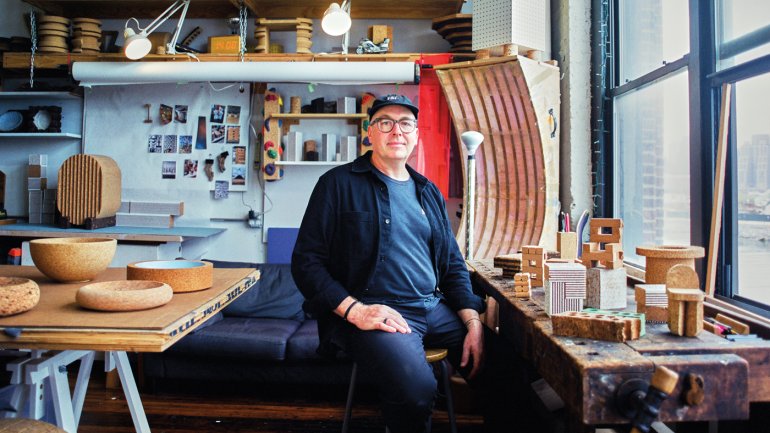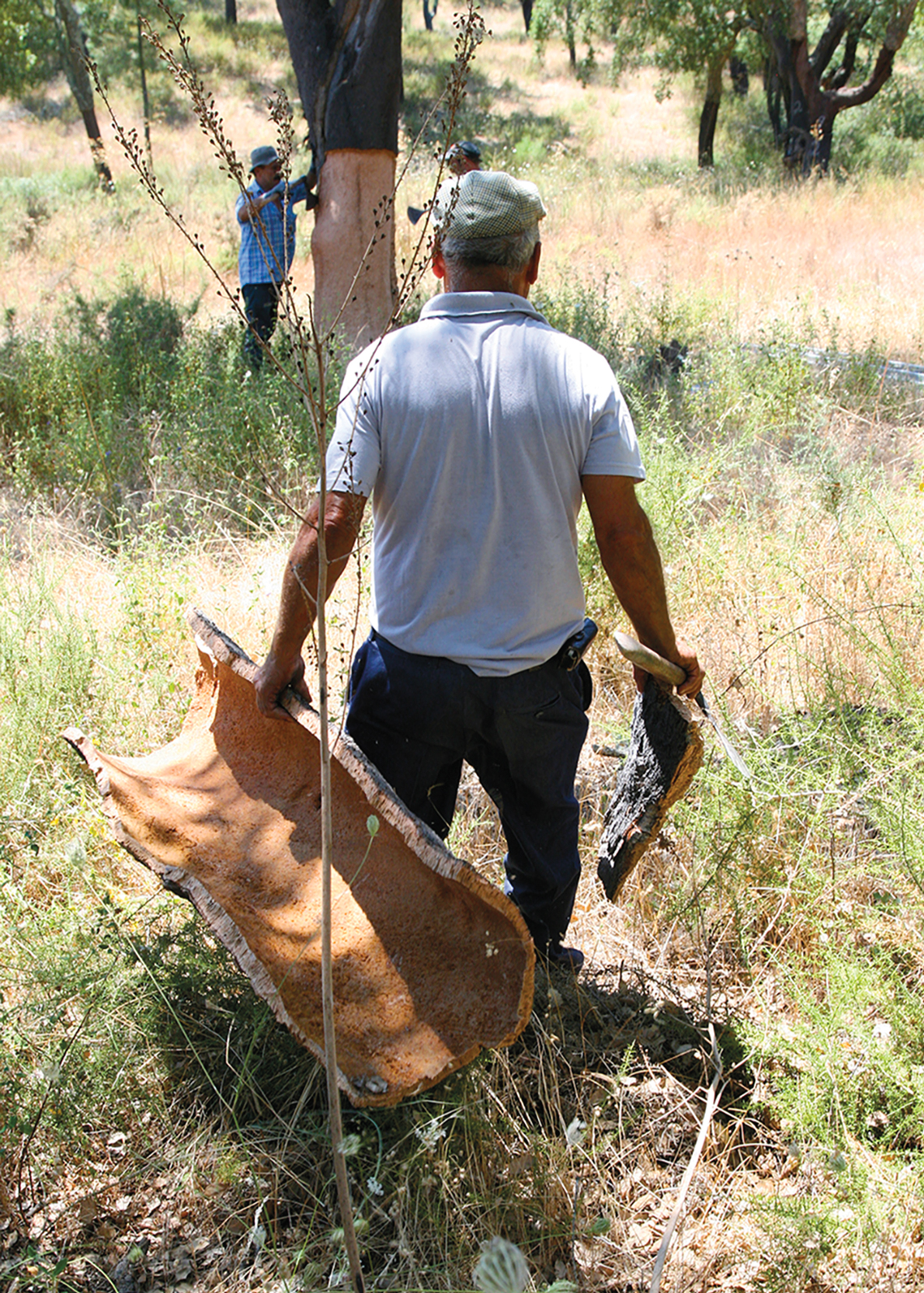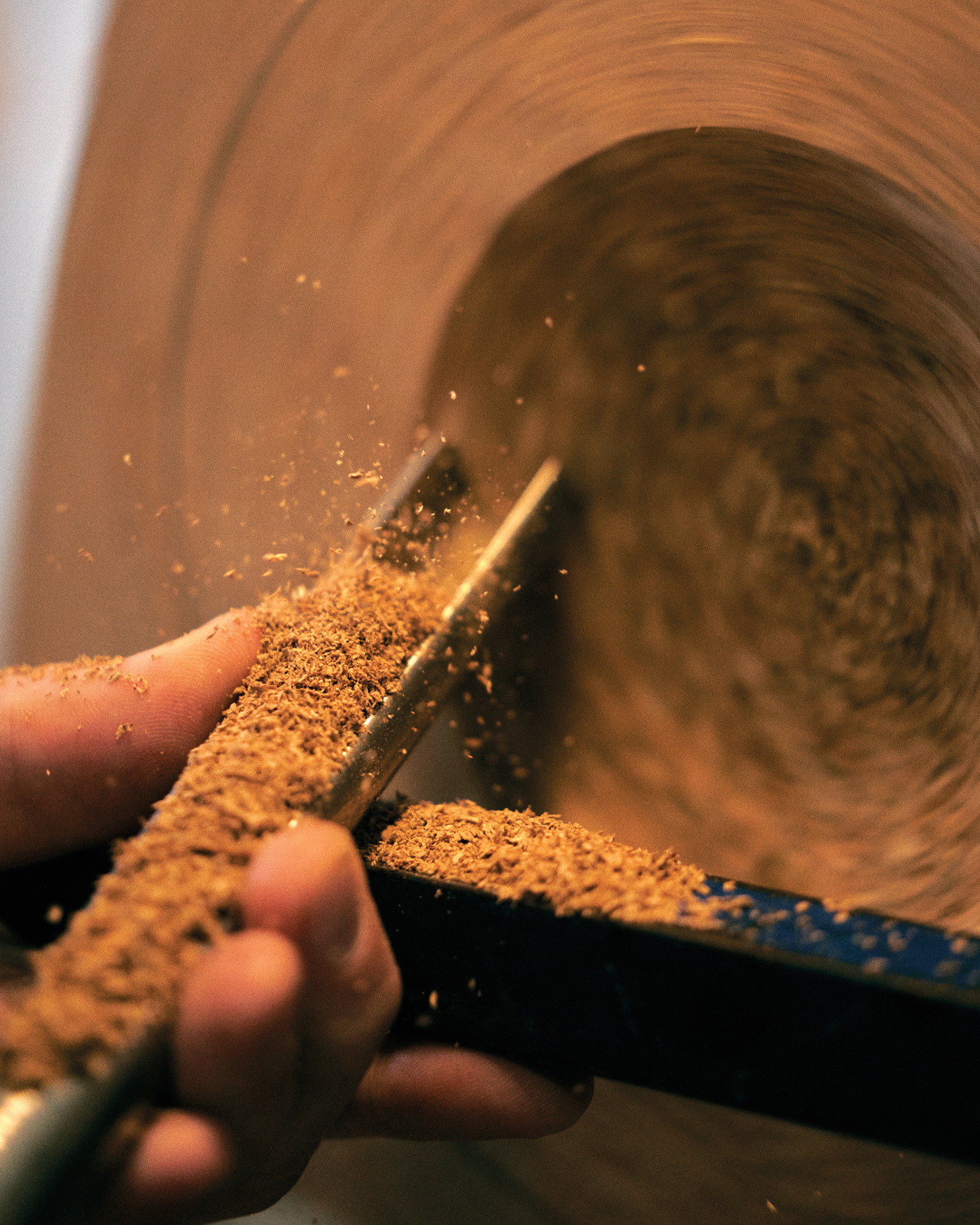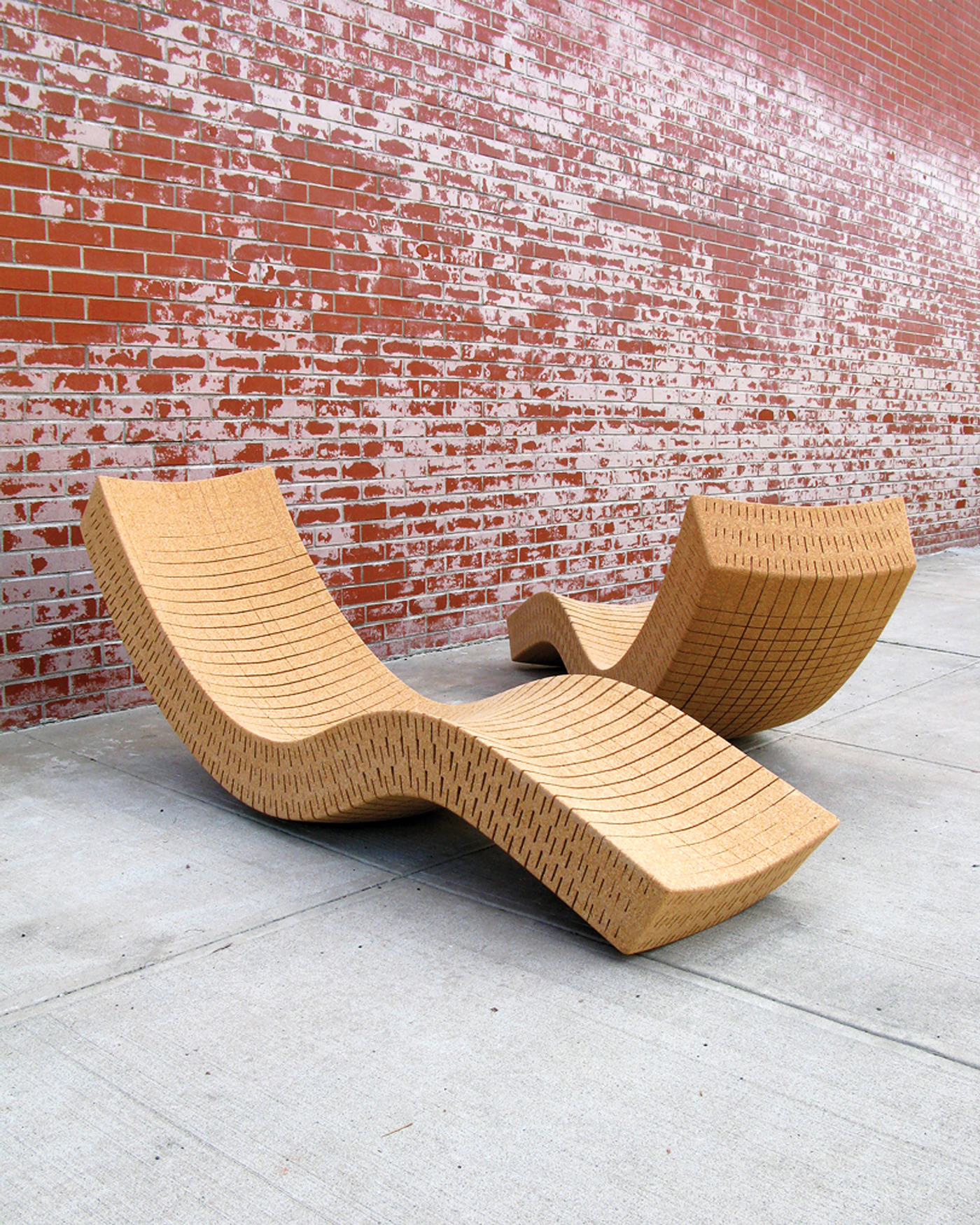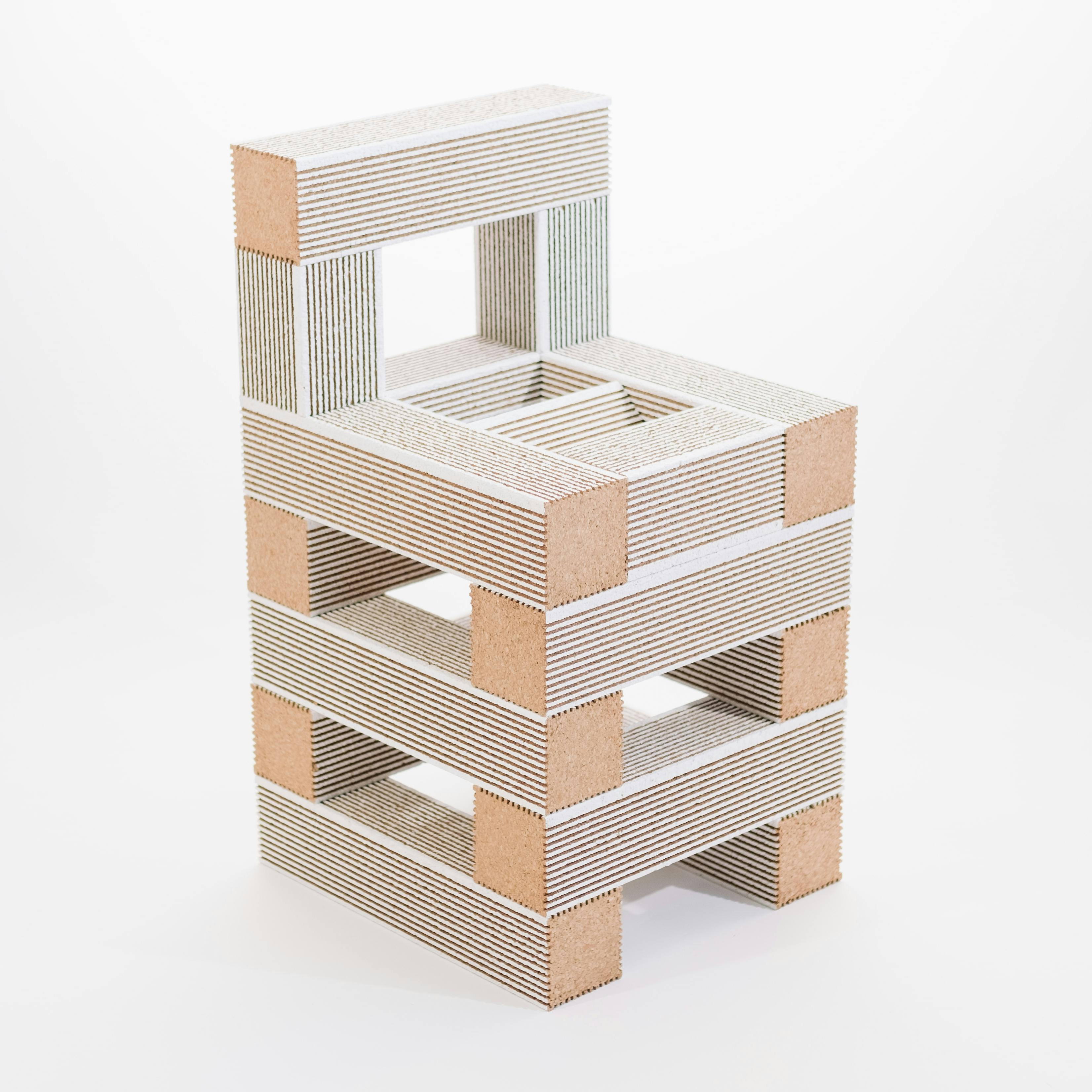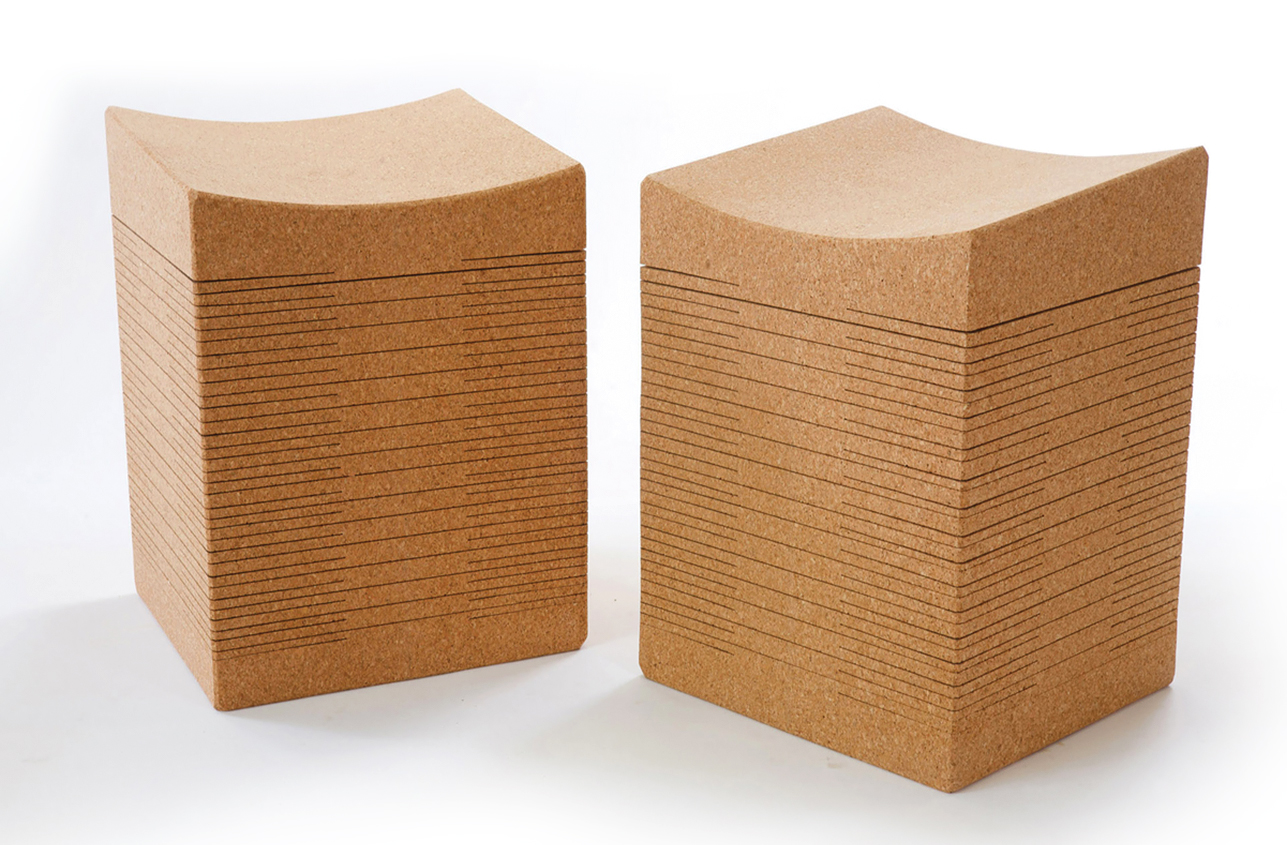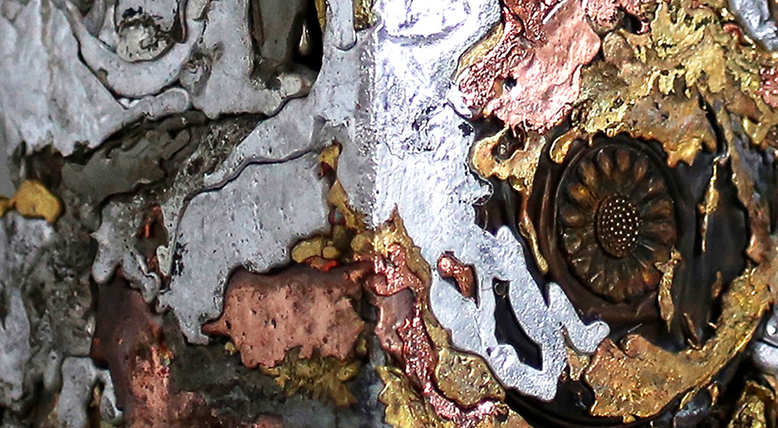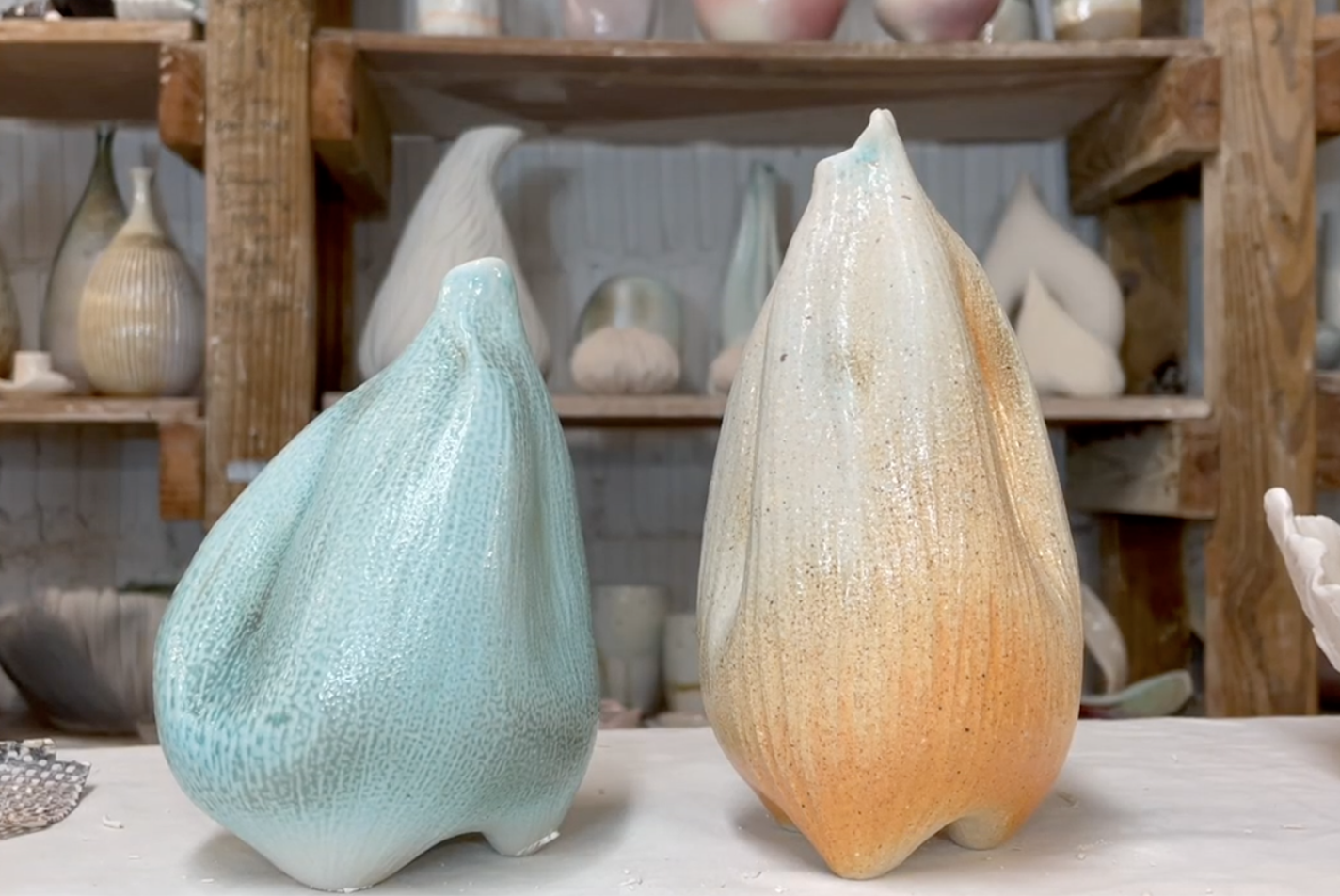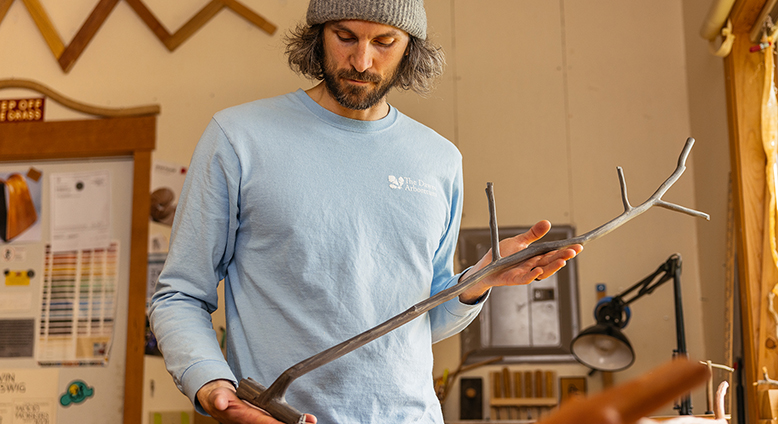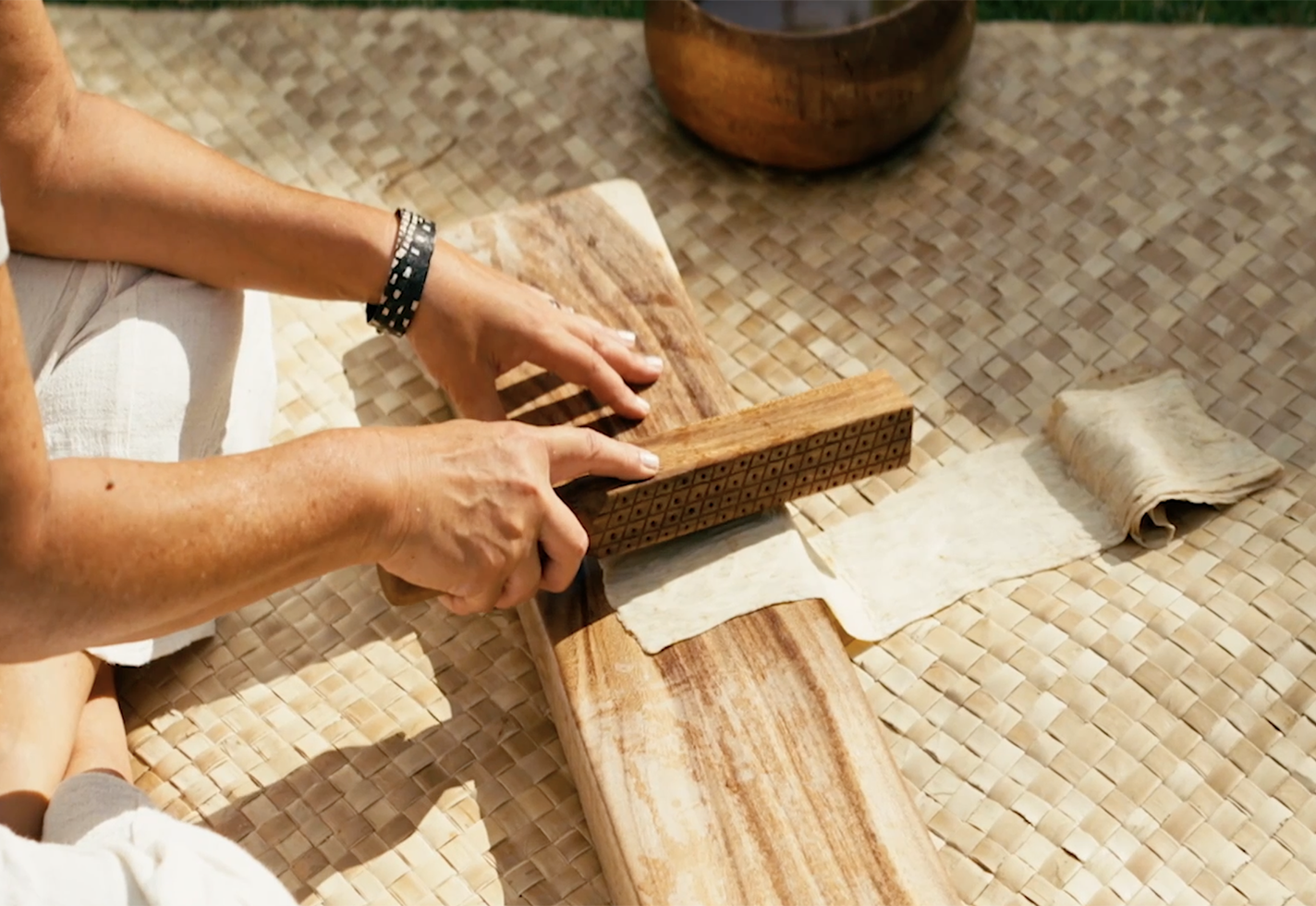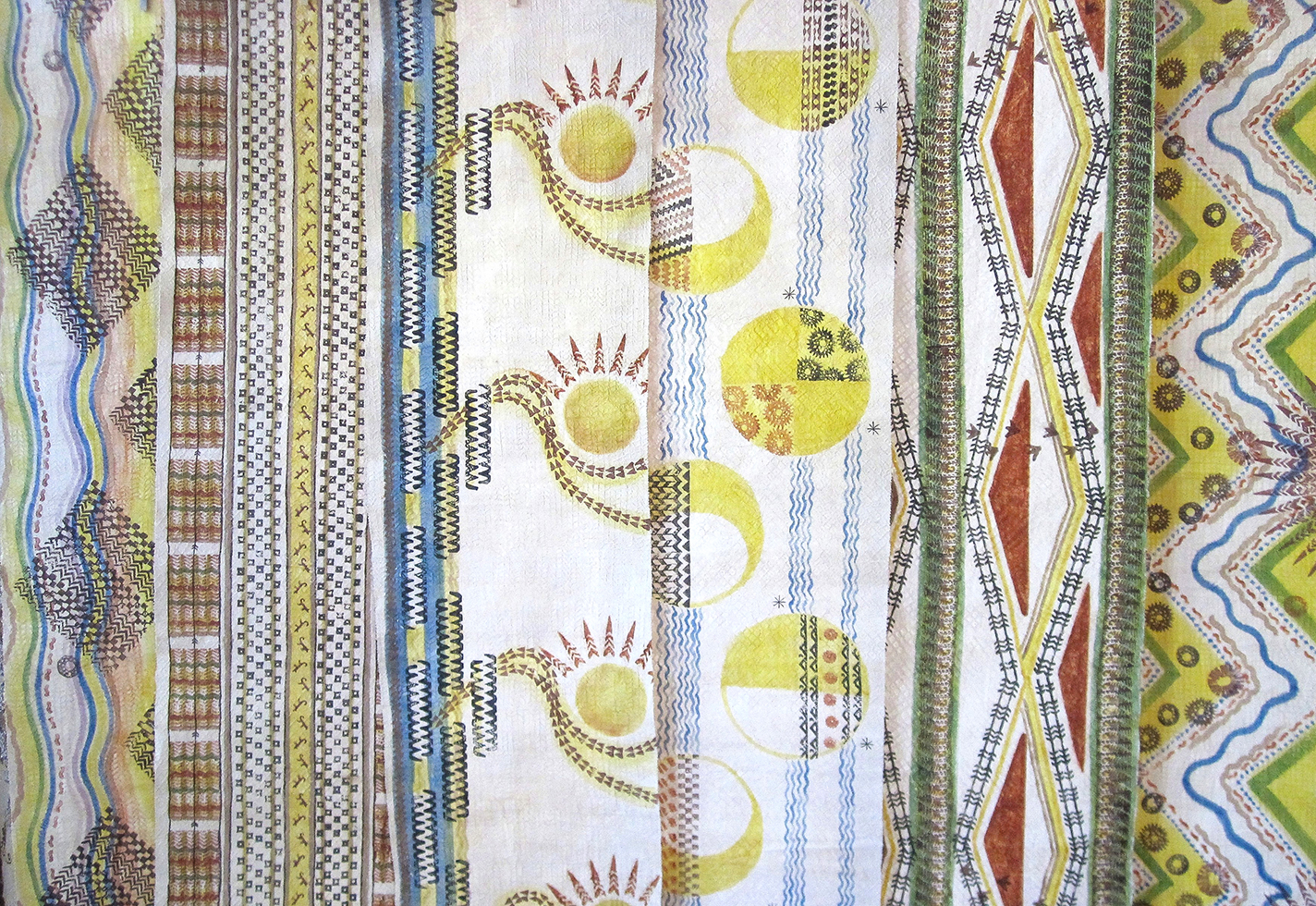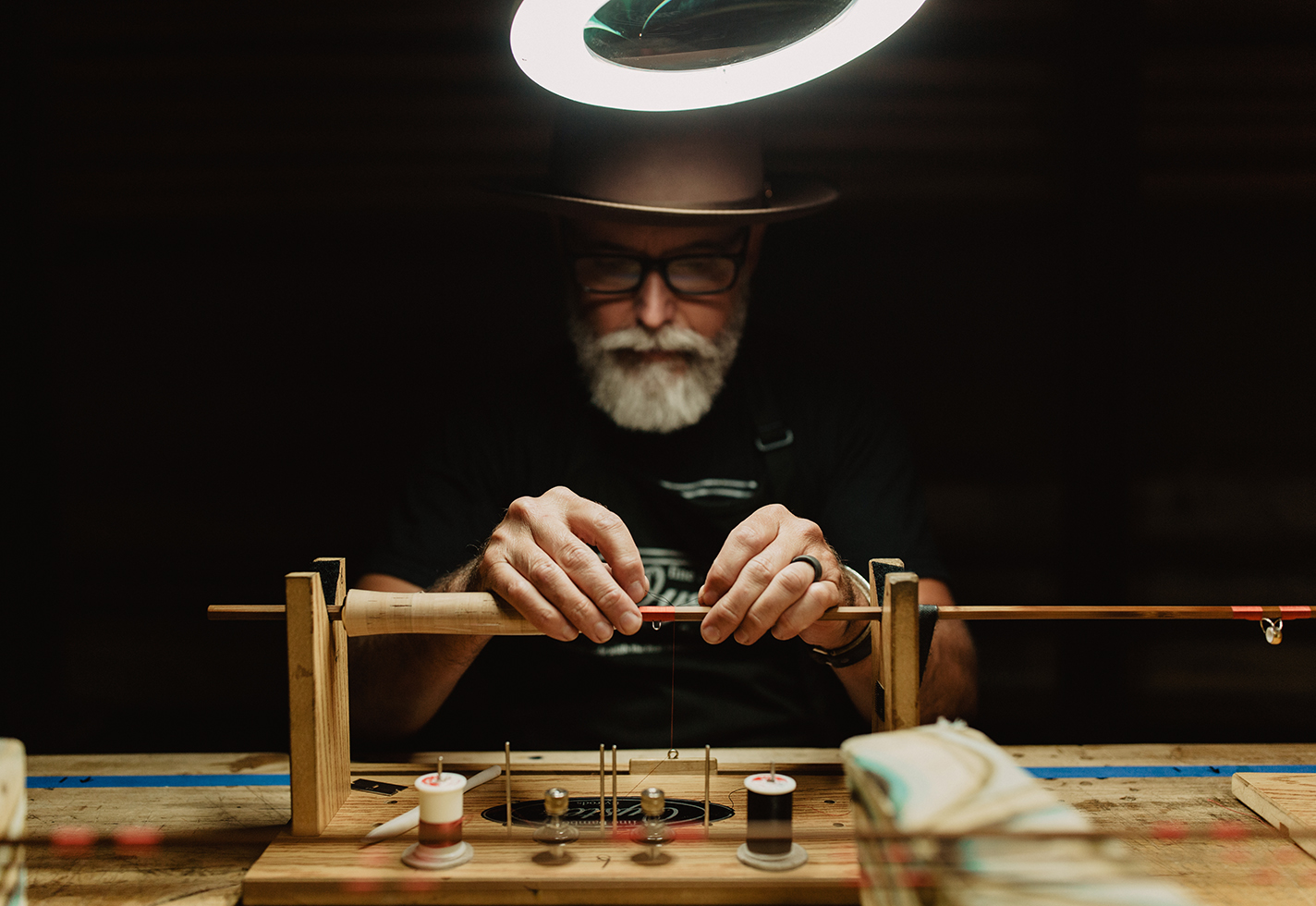“I just carve away at it like a giant shawarma,” Daniel Michalik says, gesturing at a wedge of cork in his Brooklyn, New York, studio. It’s an offcut of a massive cylinder the artist received from Portugal, home to about a third of the world’s cork forests. “I love the color, the size of the chunk,” he adds. “There’s something so warm and beautiful about the material.”
Most often encountered as wine-bottle stoppers, notice boards, or coasters, cork takes on beguiling forms in Michalik’s studio. Here, highly geometric furniture pieces and other functional home objects, from planters to wine coolers, demonstrate the material’s versatility and celebrate its natural grain and texture.
Trained in woodworking, Michalik is an enthusiastic maker of chairs, adeptly cutting and layering sheets of cork into surprisingly ergonomic supports. One stool, a block of cork with neat, horizontal slices running from curved seat to base, behaves almost like a spring, moving slightly with a user’s body as they shift. An undulating chaise lounge is made from three layers of cork sheets, each with an alternating pattern of cuts. The latticework releases the material’s flexibility—cork has a natural ability to compress and stretch—allowing Michalik to mold the long sheets into waves. The resulting S-shape can rock gently while creating a distinct material experience. “It comes into maximum contact with different parts of your body,” Michalik says. “That speaks to this haptic, psychological presence that I sense with cork. It’s soft, it’s friendly, it responds to your body. It’s never too cold, never too hot, it’s very tactile.”
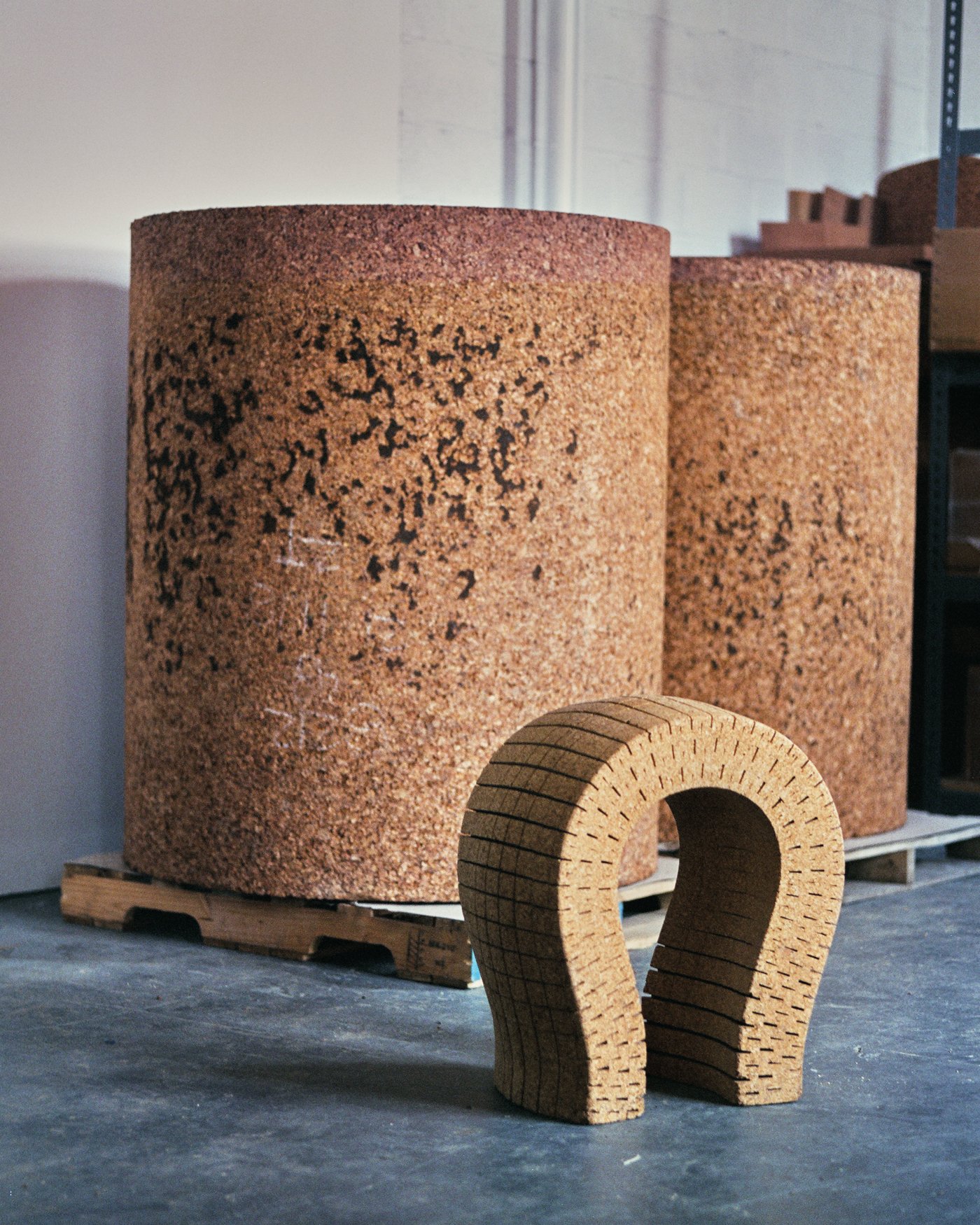
The Minhoca stool in front of solid cylinders of recycled cork in Daniel Michalik’s studio.
